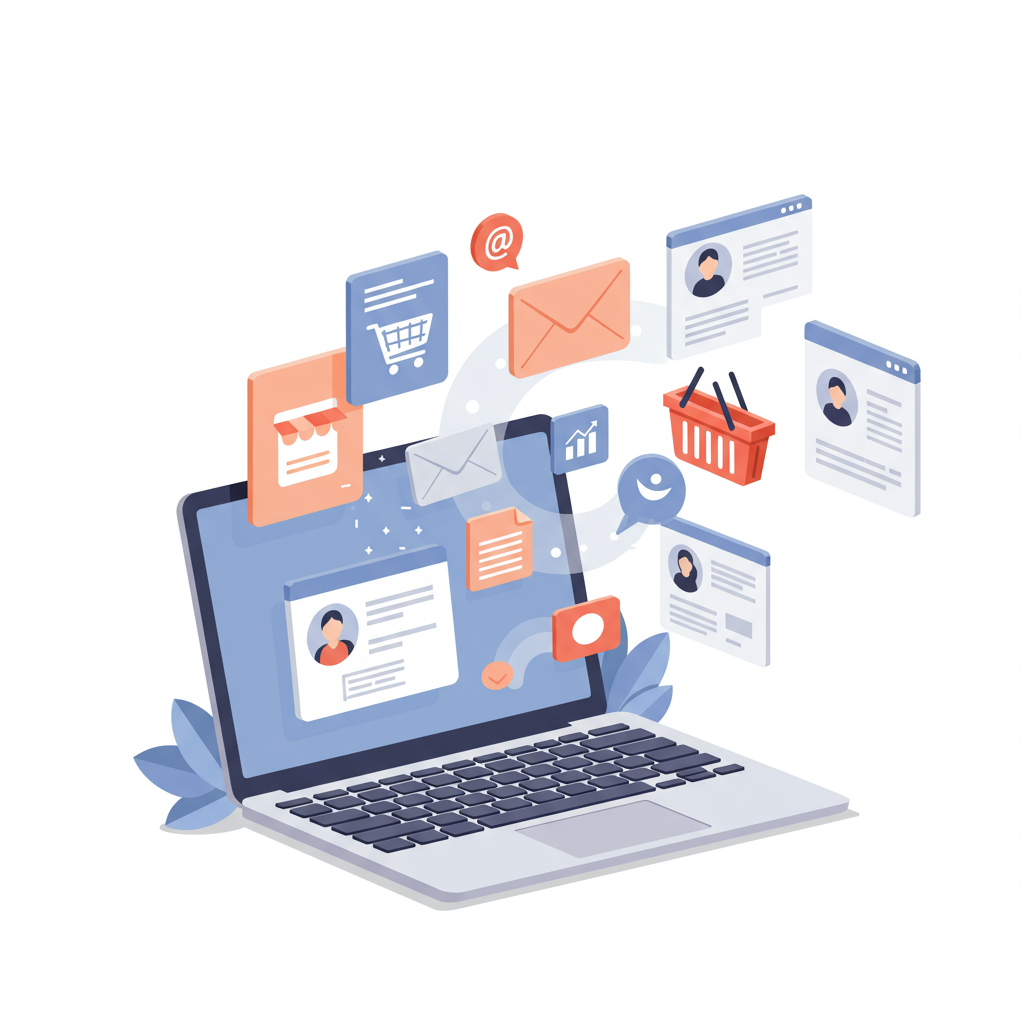Unlock the full potential of your Shopify store with smart, automated email campaigns that convert and build lasting customer relationships.
As a Shopify merchant, you’re constantly looking for ways to grow your business, connect with customers, and drive sales.
One of the most powerful, yet often underutilized, tools at your disposal is email marketing automation.
It’s not just about sending out newsletters; it’s about creating a personalized, timely, and highly effective communication strategy that works for you 24/7.
Today, I want to share with you my best practices for leveraging email marketing automation to its fullest potential on your Shopify store.
First, let’s talk about the foundation: choosing the right Email Service Provider (ESP).
While Shopify has some basic email capabilities, a dedicated ESP like Klaviyo, Mailchimp, or Omnisend offers far more robust automation features, segmentation, and analytics.
Ensure your chosen ESP integrates seamlessly with Shopify, allowing for real-time data sync of customer behavior, purchase history, and product information. This is crucial for personalization.
Once you have your ESP, the next step is building your email list. This is your most valuable asset.
Implement various sign-up opportunities: pop-ups on your website, embedded forms, checkout opt-ins, and even social media links. Offer an incentive, like a discount or exclusive content, to encourage sign-ups.
Now, let’s dive into the core automation flows that every Shopify store should implement.
**The Welcome Series:** This is your first impression. When someone signs up, they should immediately receive a welcome email.
This series, typically 2-4 emails, introduces your brand, shares your story, highlights popular products, and perhaps offers a first-time purchase discount.
Segment your welcome series if possible. For example, new subscribers who haven’t purchased yet versus those who signed up during checkout.
**Abandoned Cart Recovery:** This is a non-negotiable flow. Customers often add items to their cart but don’t complete the purchase.
A series of 2-3 emails, sent at strategic intervals (e.g., 1 hour, 24 hours, 48 hours), can significantly recover lost sales.
The first email should be a gentle reminder, the second might include social proof or urgency, and the third could offer a small incentive to complete the purchase.
**Post-Purchase Series:** Don’t stop communicating after a sale! This series builds loyalty and encourages repeat business.
Start with essential order confirmations and shipping updates. Then, follow up with product care tips, suggestions for complementary products (cross-sells), or even a request for a review.
A simple “thank you” email, perhaps with a future discount, goes a long way in making customers feel valued.
**Browse Abandonment:** Similar to abandoned carts, this flow targets visitors who viewed specific products but didn’t add them to their cart.
These emails remind them of the products they showed interest in and can include similar items or customer reviews to entice them back.
**Win-Back/Re-engagement Series:** Identify customers who haven’t purchased in a while (e.g., 90-180 days).
This series aims to re-engage them with special offers, new product announcements, or even a simple “we miss you” message.
**Birthday/Anniversary Flows:** If you collect this data, personalized birthday or anniversary emails with a special offer can create a delightful customer experience and drive sales.
Beyond specific flows, there are overarching best practices that apply to all your automated emails.
**Segmentation is Key:** Don’t send the same email to everyone. Segment your audience based on purchase history, browsing behavior, demographics, and engagement levels.
This allows for highly relevant messaging, which dramatically increases open and click-through rates.
**Personalization Goes Beyond Names:** While using a customer’s first name is a good start, true personalization involves dynamic content based on their past purchases or viewed products.
**A/B Test Everything:** Subject lines, call-to-action buttons, email content, timing of sends – constantly test different variations to see what resonates best with your audience.
**Mobile Optimization is Non-Negotiable:** A vast majority of emails are opened on mobile devices. Ensure your emails are responsive and look great on any screen size.
**Clear Call-to-Actions (CTAs):** Every email should have a single, clear purpose and a prominent CTA button that guides the reader to the next step.
**Maintain Brand Consistency:** Your automated emails should reflect your brand’s voice, tone, and visual identity. This builds trust and recognition.
**Stay Compliant:** Always adhere to email marketing regulations like GDPR, CCPA, and CAN-SPAM. Ensure clear opt-in processes and easy unsubscribe options.
**Monitor and Optimize:** Regularly review your automation flow analytics. Look at open rates, click-through rates, conversion rates, and unsubscribe rates.
Use this data to refine your strategies, tweak your content, and improve your overall performance.
Email marketing automation is not a “set it and forget it” strategy. It requires continuous monitoring and optimization.
By implementing these best practices, you’ll not only save time but also build stronger customer relationships and significantly boost your Shopify store’s revenue.
What do you think about these strategies? Are there any automation flows you’ve found particularly effective for your Shopify store?
I encourage you to start small, perhaps with just the welcome and abandoned cart flows, and then gradually expand your automation efforts.
The power of automated, personalized communication is immense, and it’s a game-changer for any Shopify merchant looking to scale.






